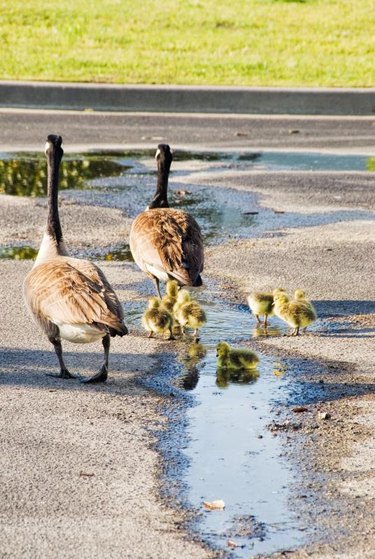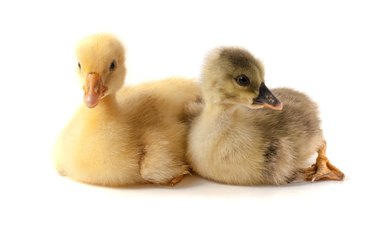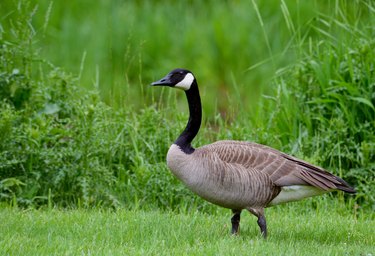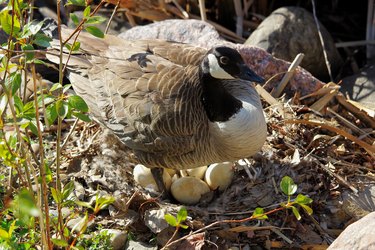What's good for the goose is good for the gander, but telling the goose from the gander in your barnyard or backyard isn't as simple as a proverb. Whether you're an experienced handler or looking to breed your geese for the first time, it's not only helpful to know how long it takes for eggs to hatch but also how to tell your male and female geese apart. Fowl experts are able to ascertain anatomical proof of a goose's gender, but behavioral cues also can add to the body of evidence. And the final determination may come in the spring when eggs make their annual appearance.

Video of the Day
Physical Examination
Determining whether a goose is <atarget="_blank" href="http://www.dpi.nsw.gov.au/agriculture/livestock/poultry/species/geese-raising/egg-production"> </atarget="_blank">male or female by its genitals usually requires expertise in sexing fowl, but the Department of Primary Industries has a detailed guide for any aspiring keeper of geese . The vent of goslings can be examined by a chicken sexer when the bird is as young as a day old.
Video of the Day

Geese are mature at 7 months and this is the best time to identify the sex of the bird, according to the Department of Primary Industries. A team of people is recommended, one to hold the bird and one to gently push the goose's tail toward the head while pressing without force on the abdomen to coax the bird into relaxing and exposing the vent. If it's a male, a corkscrew-shaped penis should be exposed.
Physical Differences
You can also identify the sex of geese by examining the physical characteristics as the exact size ranges and physical traits of geese will vary by breed. According to Majestic Water Fowl, a nonprofit dedicated to waterfowl identification and finding homes, male Chinese geese weigh from 10 to 12 pounds and the females clock in at 8 to 10 pounds, while male African geese can tip the scales at 20 pounds with females just a couple pounds lighter. Male Embden geese are much larger than their female companions, weighing 30 to 35 pounds compared to 20 to 22 pounds.

And though size is generally an indicator of gender, the Majestic Waterfowl Sanctuary in Lebanon, Connecticut, which has seen all breeds come through its ponds, notes that Toulouse geese look and act so similar they're difficult to distinguish.
A male Chinese or African goose may have a larger knob at the top of its bill, but other gender-identifying characteristics should be considered.
Tip
Sometimes feather colors, varying by breed, can be used to distinguish gender if the bird is purebred.

Wait for the Honk
Behaviors can vary by breed, but the general pitch of geese voices can be a gender indicator. According to Metzer Farms, the gosling's voice changes into its adult tone around 4 months of age, and males generally are noted to have a cry that's more ear-piercing. The female usually will sound more hoarse and less shrill.
Interactions
It's easier to sex a goose if there's more than one around. A male meeting a new flock generally will jump into the pecking order challenge while a female scurries away from the alpha male.
Another behavior noted by breeders at Metzer Farms is a tendency of male geese are generally more confident in coming forward toward you or challenging your leashed dog, and usually have a chest-puffed cocky strut as they act protectively around their mates.
Tip
When in doubt, especially with harder-to-sex breeds, ask your veterinarian, livestock supplier or local rescue about DNA testing. Online companies such as Beauty of Birds offer genetic testing as well.

Spring Eggs
The surefire way to tell if a goose is a female is in the spring. Eggs are usually laid from the late winter in February through June, though you may not see any eggs at all from young or old females. Males will act protective toward their mates during breeding season.